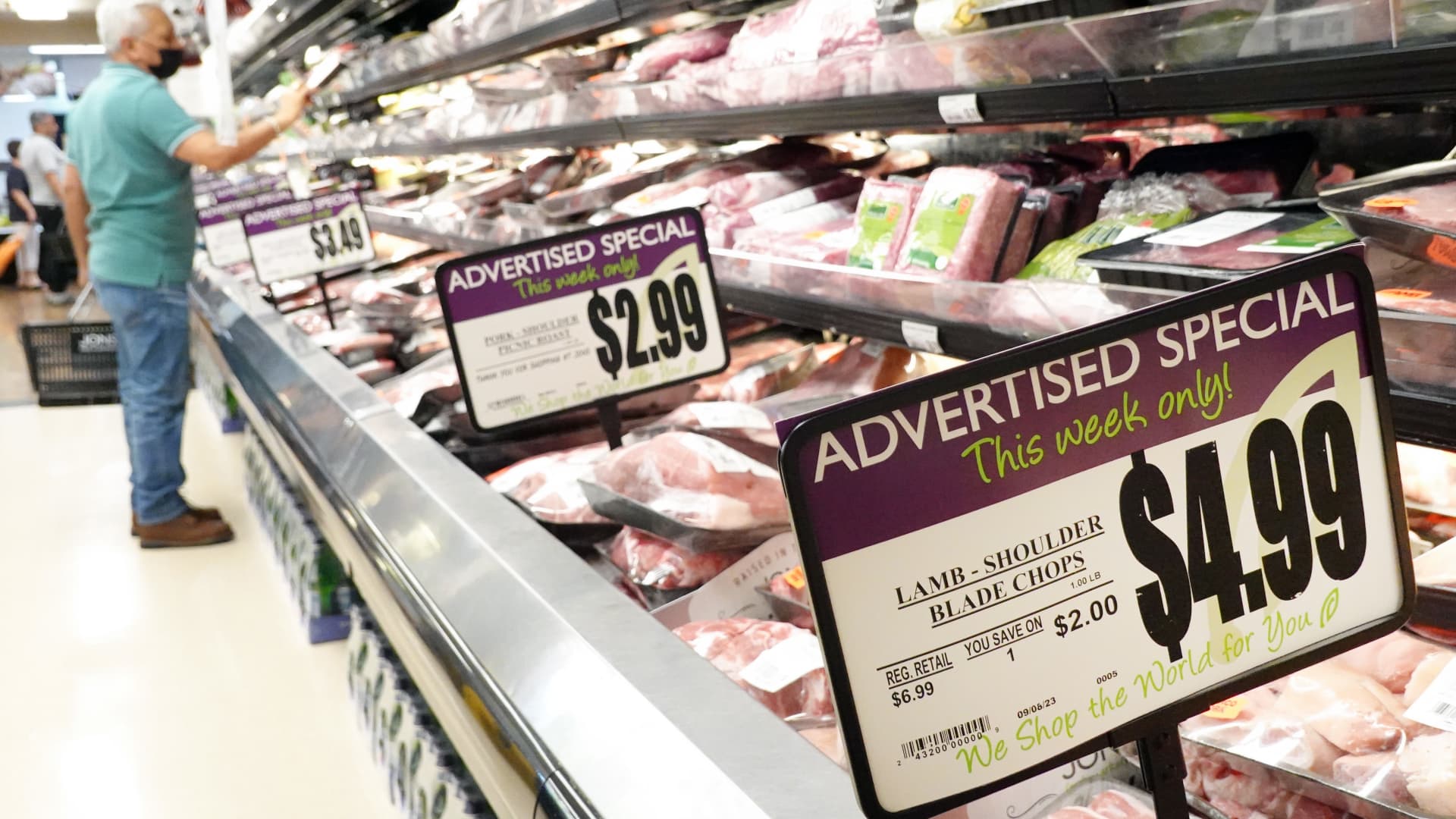When a shopper strolls through a grocery store and looks at the meats section, they might not realize the impact of inflation on the prices. However, recent data has shown that price increases have been somewhat controlled.
According to the U.S. Department of Labor, the producer price index (PPI), which measures what producers receive for their goods and services, rose 0.7% in August and 1.6% on a year-over-year basis. This increase exceeded the Dow Jones estimate of a 0.4% rise and marked the largest single-month increase since June 2022.
But when excluding food and energy, the PPI only climbed 0.2%, matching the estimate. On a 12-month basis, the core PPI increased by 2.1%, which is the lowest annual level since January 2021. By excluding food, energy, and trade services, the PPI only increased 0.3%.
These numbers came a day after the release of the consumer price index (CPI), which showed a 0.6% monthly increase and a 3.7% rise from a year ago. Excluding food and energy, the core CPI increased by 0.3% and 4.3%, respectively.
Similar to the CPI, the PPI experienced upward pressure from surging energy prices. The PPI energy index rose by 10.5% in August, driven by a 20% surge in gasoline prices.
Furthermore, the inflationary trend extended to the final demand goods prices, which increased by 2% in August, the largest one-month gain since June 2022. Services prices also went up by 0.2%.
On another economic note, the Commerce Department estimated that retail sales rose by a higher-than-expected 0.6% in August, surpassing the Dow Jones estimate of a 0.1% increase. Excluding automobile sales, retail sales still increased by 0.6% against an estimated 0.4% rise.
These numbers indicate that consumers are managing to sustain their purchasing power despite the rise in prices and mounting levels of credit card debt.
In the market, following the release of both reports, futures tied to the Dow Jones Industrial Average showed an increase of about 80 points. Treasury yields were also slightly higher across the board.
The PPI mainly focuses on domestic prices and represents the cost of producing goods and services. In contrast, the CPI measures what consumers pay in the marketplace and includes import prices.
Both indices demonstrate that while inflation remains an issue for households in the United States, the rate of increase appears to be slowing down in recent months. This is an important factor for the Federal Reserve as it plans its future course, especially after multiple interest rate increases totaling 5.25 percentage points.
Market pricing suggests that there is almost no chance of a benchmark rate hike by the Fed next week. While central bank officials stated in June that they expect one more rate hike before the end of the year, CME Group data on Thursday morning showed a 42% probability of a move in November.
Lastly, a third economic report revealed that initial jobless claims slightly increased to 220,000 for the week ending September 9, falling slightly below the Dow Jones estimate of 225,000, according to the Labor Department.
Denial of responsibility! Vigour Times is an automatic aggregator of Global media. In each content, the hyperlink to the primary source is specified. All trademarks belong to their rightful owners, and all materials to their authors. For any complaint, please reach us at – [email protected]. We will take necessary action within 24 hours.


